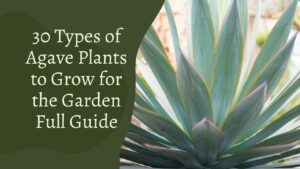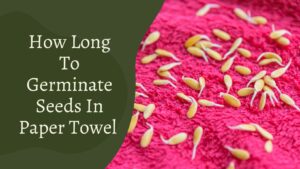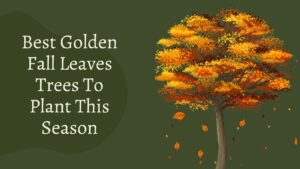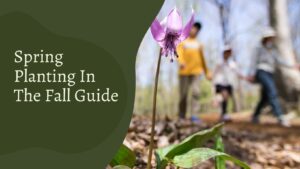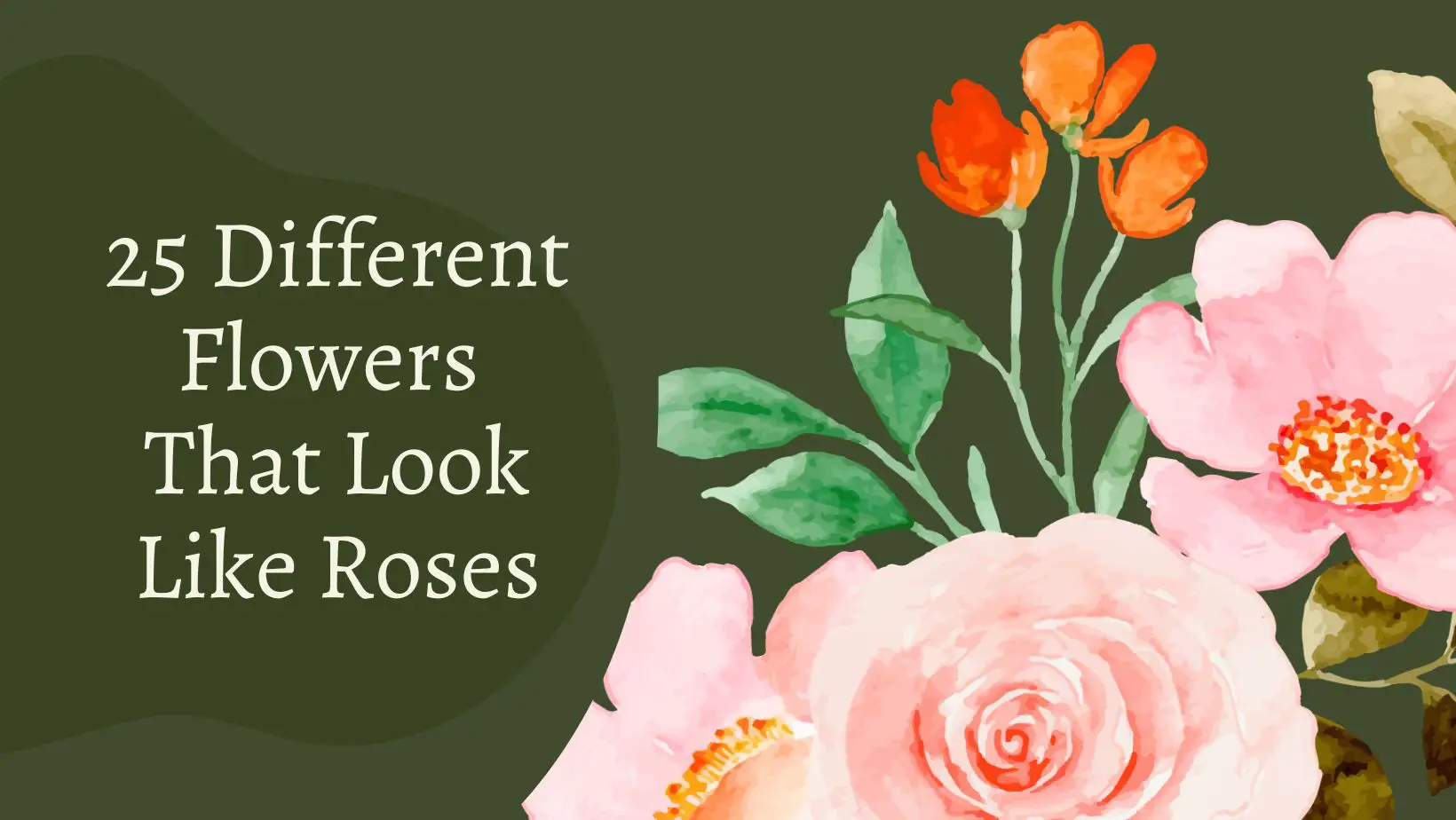
Roses are the queens of flowers, well-loved, and the most well-known blooming plants on the planet. However, they are “picky” and not grown in many areas. The form of the rose bloom is not unique to this plant. Several sorts of blooming plant species with a rose-like look are more appealing in your yard. Flowers that look like roses are peonies, camellias, dahlias, begonias, and ranunculus, can be grown where roses cannot.
You’ve come to the correct place if you’re seeking the most incredible selection of flowers that look like roses.
Camellia
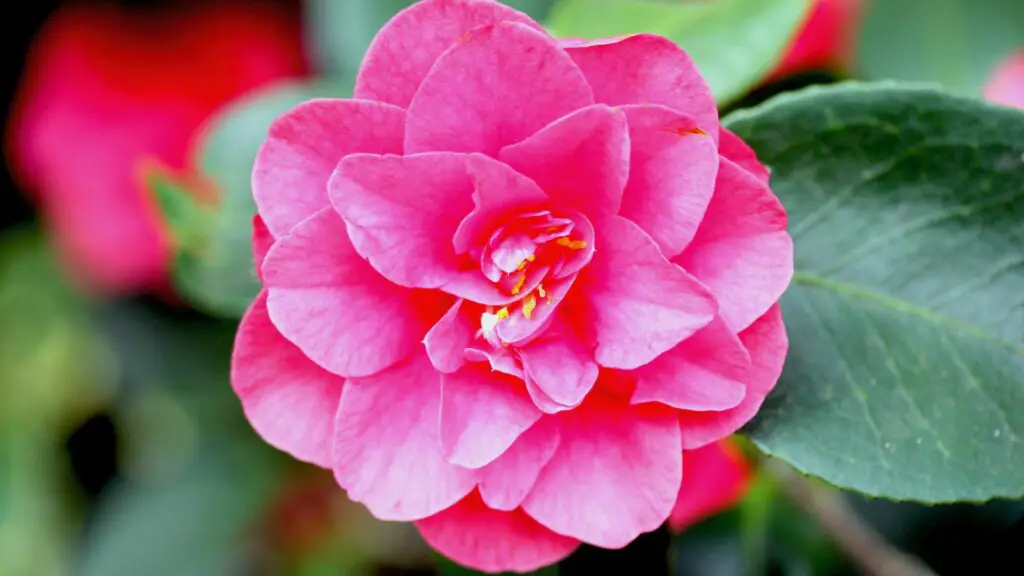
Camellia is one of the most well-known, popular, and attractive flowers that resembles roses. And, like roses but not like lisianthus, it grows into lovely bushes that may get very large. They also feature beautiful, waxy, and highly attractive deep green leaves. However, it is the camellia blossoms that we all like. They come in various colours, from white to pink to crimson; some are very romantic, while others have an oriental feel about them. There are several different types, with blooms ranging in size from 1.5 inches (4 cm) to 7 inches (18 cm).
They thrive in acidic soil, and if your plant is unwell, the soil may require a couple cups of tea or an organic acidic fertiliser. Yellow leaves and blossoms that dry out before opening are indicators that they require acidity. USDA zones 7 through 9 are typically hardy. Full sun and partial sun
Depending on the kind and where you dwell, the season might range from October to April. Typically, they are 10 feet tall (3 metres) and 6 feet broad (1.8 metres), however some can grow to be twice that.
Ranunculus
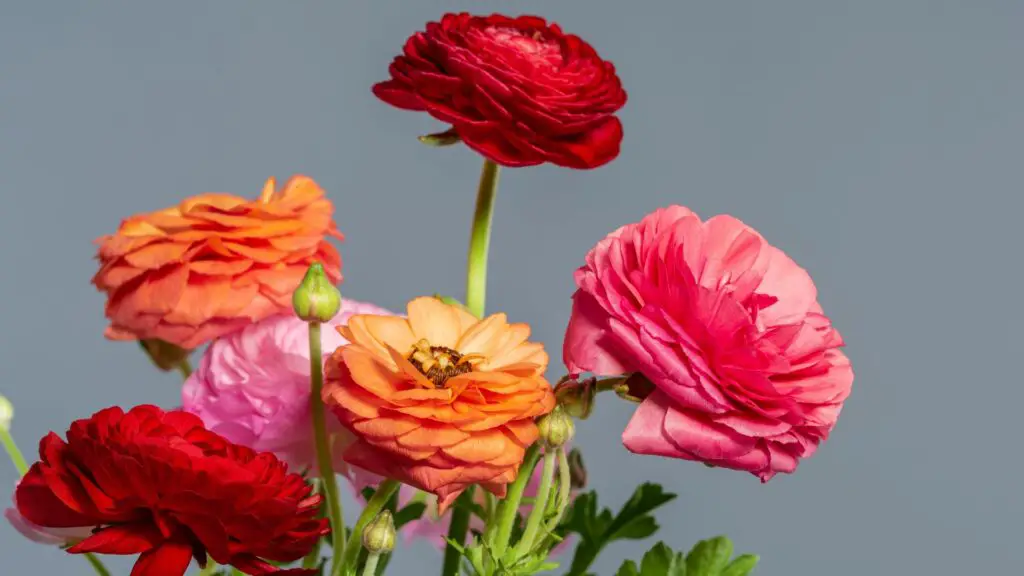
It has the most “old world” pompon shaped rose appearance of all the rose-like blooms. Ranunculus petals are similarly many and thick, giving them the same “old world” appearance as rose cultivars like ‘Pomponella’ or ‘Pompon Flower Circus.’
These are forms that work well in both formal and casual gardens. They thrives in cottage gardens, rural settings, and romantic flower beds and hedges.
However, because they are short plants, you can’t use them to mimic the shrubby appearance of roses. On the other hand, they provide a broad choice of colour options. White, yellow, orange, pink, purple, and even blue variations are available. Typically, they are bright colours, but other cultivars, like as peach and apricot, offer more delicate hues that are ideal for romance.
Apple blossom
The apple blossom, Malus Domestica, is the official flower of Michigan and Arkansas. This apple tree flower belongs to the angiosperm family. If the mould contains well-balanced boron, zinc, phosphorus, nitrogen, and other nutrients, the size of an apple bloom can even exceed that of a rose. This calming floret is often a baby pink colour that fades to white as the season progresses. Like a white or pink rose, an Apple blossom represents purity and innocence. When a rose is not available, a bouquet of apple blossoms might be used to add to the overall tranquilly.
Impatiens doubles

Perhaps you had no idea that impatiens can resemble a rose? Single people, in reality, do not. When you look at double ones, you’ll notice a remarkable resemblance to the Queen of Flowers.
Furthermore, they come in various hues, including numerous delicate tones of white, off-white, rose, and pink. They also offer deep crimson, bold pink, and vivid orange kinds. As you may know, impatiens are prolific bloomers, producing a sea of flower heads that nearly completely obscure the rich, lush, green, and lovely foliage of these relatively short plants.
They’re great for flower beds, borders, and pots and are one of the few blooming plants that bloom well in full shade.
They are hardy in USDA zones 2 through 11 but are often planted as annuals.
Full sun, medium shade, or total shadow are the options for light exposure.
Season to bloom: spring through fall.
Size: Height and spread: 1 to 3 feet.
Gardenia
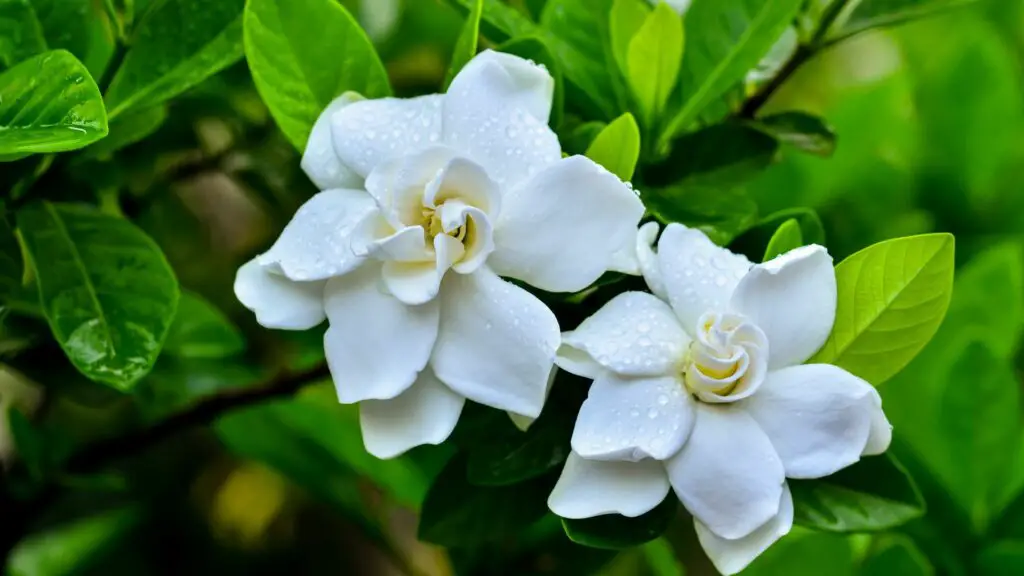
It is one of the flowers that look like roses. Beautiful gardenia is another queen of gardens that resembles a rose so beautifully that it is named after the word “garden” itself.
Gardenia’s wonderfully gorgeous and magnificent blossoms are among the most well-known worldwide. They are typically white, beautifully organised, and soft in appearance, and have become associated with the word “flower.”
The double blossoms resemble roses, whilst the single petals resemble jasmine. The dark green, elliptical leaves are quite useful for adding depth and a dramatic but natural texture to gardens. They grow into tiny bushes that can partially replace short roses. They, like camellias, can tolerate part shade and prefer acidic soil. This makes them an excellent replacement for roses in situations where growing them is impossible.
Late spring through summer is the blooming season.
Size: up to 5 feet tall (150 cm) with a spread of 4 feet .
Peonies
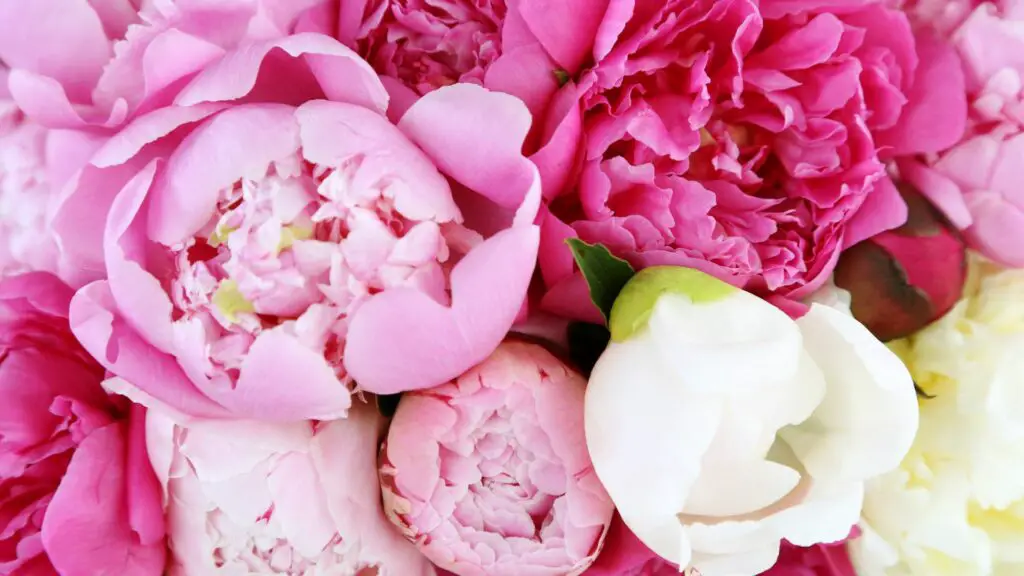
The peony is another iconic rose-like bloom. This is a tiny perennial herbaceous shrub with highly attractive leaves that can change colour from green to purple, similar to roses. Peonies, more than any other plant on this list, have leaves that resemble those of rose bushes.
However, it is the flowers that we notice the most. Peonies also have lovely cup-shaped double blooms in various colours, including brilliant red, orange, and yellow, as well as more “determined” tints, such as all shades of pink to rose. They’re fantastic for containers. In all forms of informal gardens, boundaries and beds are used.
They are typically hardy in USDA zones 3 through 8.
Full sunlight or partial shadow
Spring until July is the blooming season.
Size: typically between 2 and 3 feet tall and wide.
Carnation Flowers
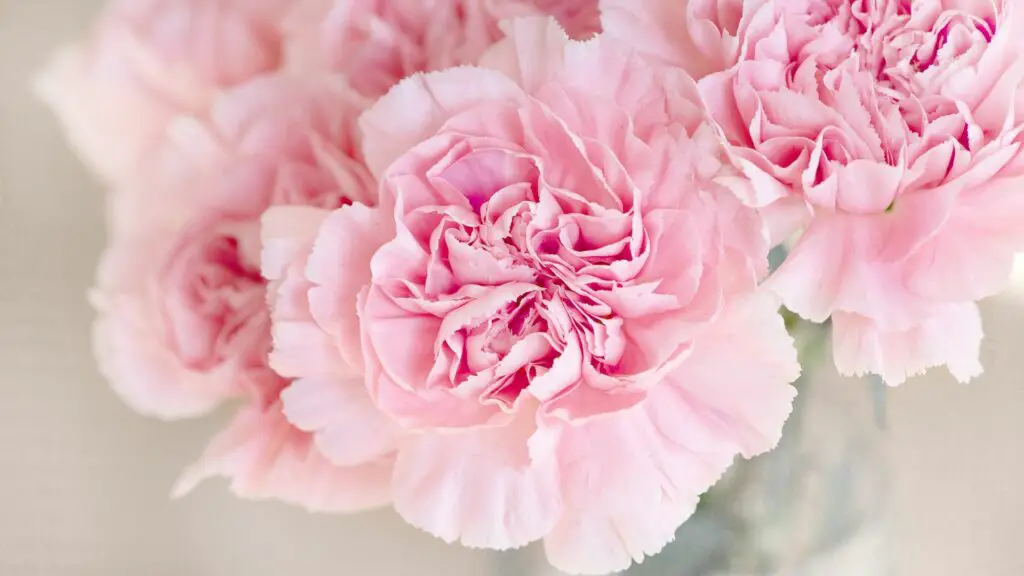
Carnations are known for their enticing perfume, but if you look closely, double ones resemble roses. This plant comes in so many distinct types that your options are endless. White to dark red to pink is usually the most prevalent pallet. The difference between single and double hues is enormous.
They are hardy, generous, and low-maintenance plants that will thrive with little care. Some are quite little, but even the larger ones never grow into bushes. Thus, they cannot be used instead of roses.
However, any gardener will find it difficult to resist the carnation blossoms in beds, borders, pots, and along the sides of walks and steps…
Hardiness ranges from USDA zones 5 to 9, depending on the cultivar.
The sun is shining brightly.
Spring and summer are the blooming seasons.
Size: Most are under 1 foot tall, with the tallest reaching 3 feet in spread (30 cm) (90 cm).
Well-drained soil, draw, or dirty earth with a pH of less than 7, ideally between 6.7 and 6.9. It can withstand drought.
Begonia Flowers

Begonia adds even more beauty to this selection of flowers that resemble roses. We all like this incredibly bountiful blossoming beauty, which we frequently see in window boxes and hanging baskets. They are fast-growing and low-maintenance, but they will bloom for moths on end.
The double ones resemble roses, and as you may know, there are many distinct variations in a wide spectrum of warm hues and white. Many are trailing, making them great for pots and hanging baskets, and many have eye-catching leaves, including purple, almost black, and even blue and white!
- Hardiness: USDA zones 10 to 11 are normally suitable.
- Partially shaded lighting.
- Season to bloom: spring through fall.
- Size: up to 3 feet tall and wide (90 cm), although most are around 30 cm tall and 2 ft wide (60 cm).
It prefers well-drained loam or sandy loam with a pH of 5.2 to 6.0, but may grow in neutral soil.
Dahlia
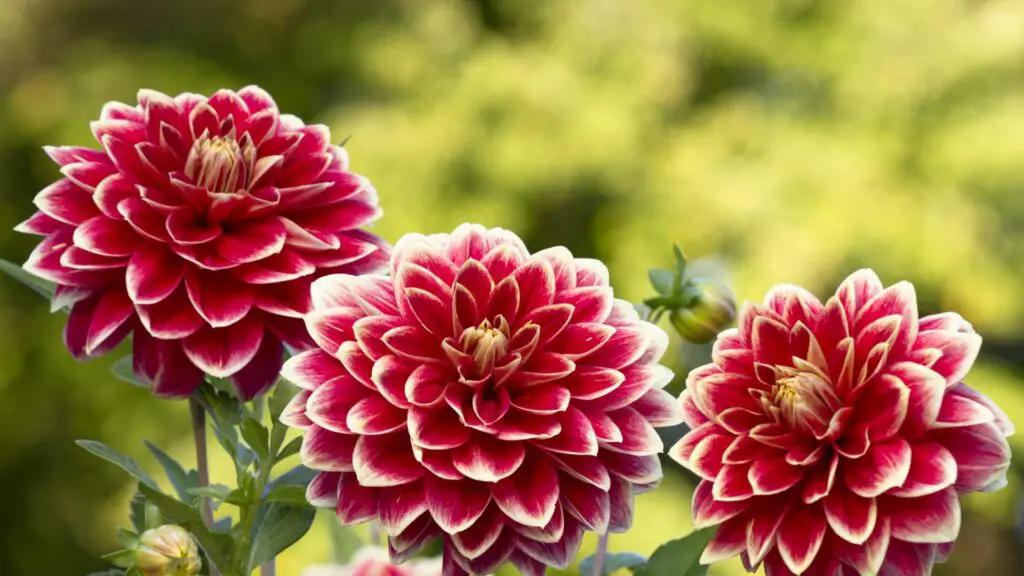
It is one of the flowers that look like roses. I’d like to round up our list of rose-like flowers with a remarkable example: the dahlia. Dahlias come in a wide range of sizes, from miniature to enormous, with bloom heads up to one foot (30 cm) in diameter! As a result, they are possibly the “showiest” of all the flowers on our list.
Some dahlias have such uniform patterns of petals that they resemble origami or water lilies rather than roses. However, many doubles do. They’re especially good for borders, where they may keep the rose blossom shape far into the fall.
The colours are also stunning! Dahlias are recognised for their vibrant, warm colour pallet, which includes colours of red, orange, and purple. Hardiness varies per species, although it normally ranges from USDA zones 8 to 11.
The sun is shining brightly.
Summer and fall, generally until the first frost, are the blooming seasons.
The tallest species can grow to be 6 feet tall (180 cm) and 3 feet wide (90 cm), while most species are smaller.
Soil requirements: ideally, well-drained, wet soil, earthen, or grimy earth with a pH of 6.6 to 7.0, but adaptable to somewhat acid and a little alkaline soil as well.
Double Tulips Flowers
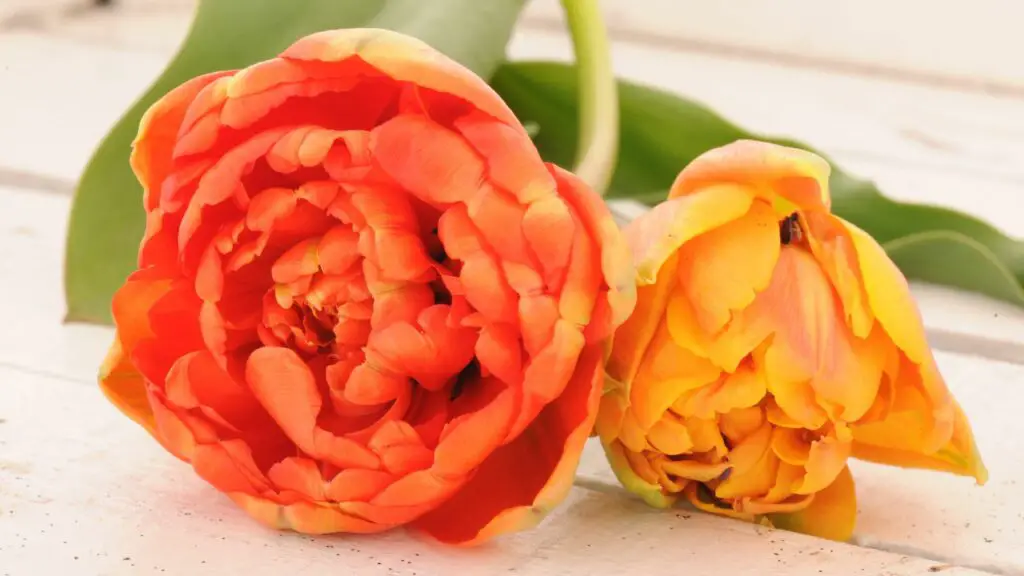
Double Tulips are beautiful Dutch flowers with vibrant hues. These are some of the most beautiful rose-like flowers for bouquets. Each tulip bulb is packed full of petals and colour on top of long stems, making them easy to cultivate and cut for any occasion.
However, when cultivating these plants, make sure they are carefully covered and cared for. The big flowers of Double Tulips are lovely, but they are susceptible to weather damage. To keep these flowers safe, many gardeners plant them in a garden bed, a container, or around the perimeter of their home.
Furthermore, when grouped together, Double Tulips may produce ten to fifteen blossoms at a time, so give them lots of light and room. These plants may also be grown in the fall, but their soil must be well-drained and loose for your blooms to thrive.
Lisianthus (Eustoma Grandiflorum)
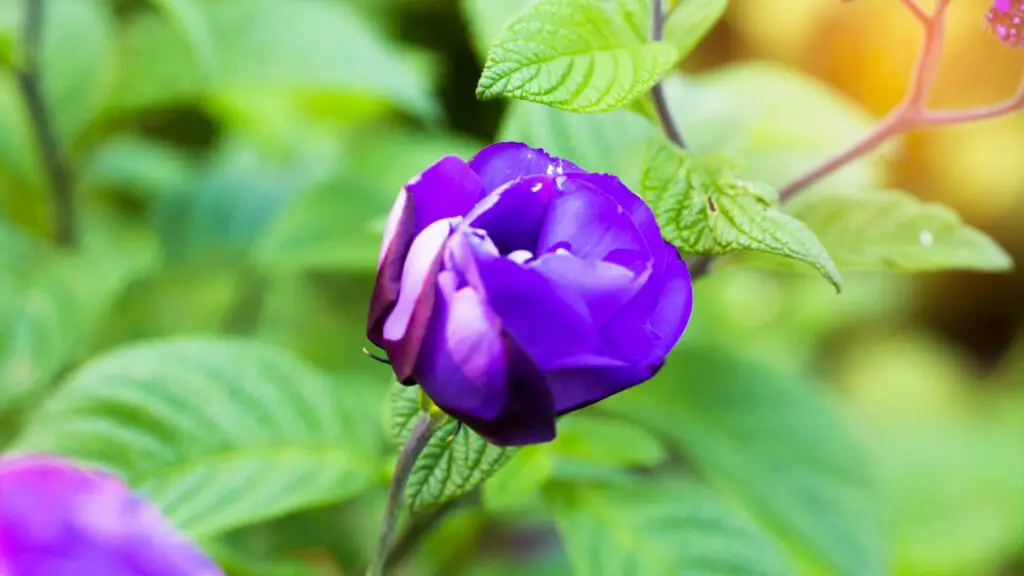
It is one of the flowers that look like roses. You may mistake a lisianthus for a rose if you look at it closely. This plant’s cup-shaped double blooms must be among the closest “initiation” of the mist renowned of flowers.
They don’t have as many petals as some roses, and the stamens and carpels may be seen (the inner part of the flower). Apart from that, the petals have the same appearance as rose petals, and they are much more elegant.
They come in a variety of hues – the selection is astounding, ranging from white to purple. Dichromatic petals, particularly white petals with brilliantly coloured tips, are also quite prevalent (purple, blue or pink). The purple and violet spectrum is perhaps the most powerful, but there are also pastel and watercolour types, such as lemon and rose colours.
It is a delicate perennial that in colder areas may be grown as an annual. However, because the plants are not as large as rose bushes, they are better suited to flower beds, borders, and even containers.
Double Dianthus
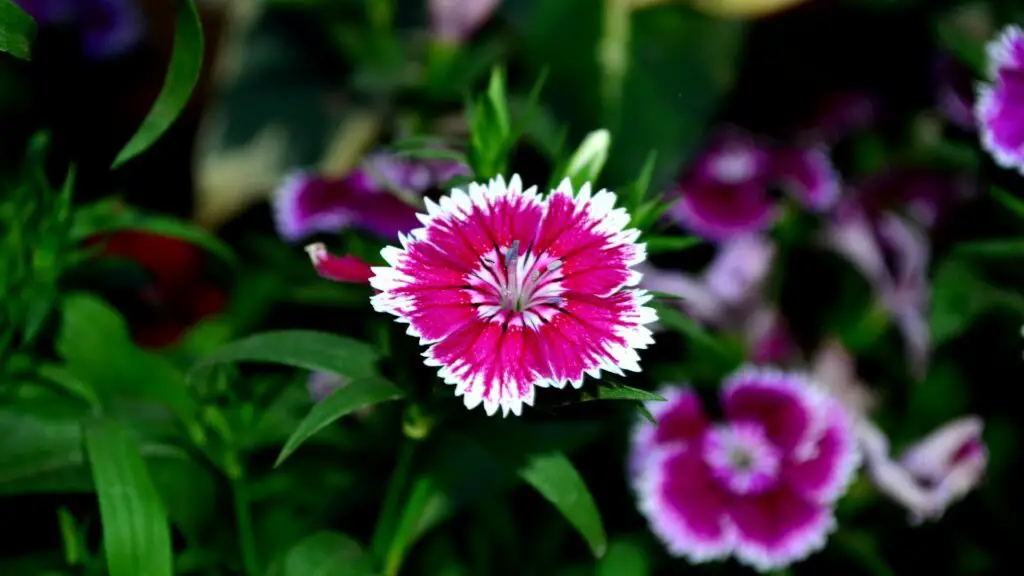
Summer flowers, Double Dianthus, blossom in mild areas during the spring and summer. This is another low-maintenance shrub with blooms that offer a spicy-sweet aroma akin to cloves. These blooms come in a variety of colours, including reds and pinks, as well as brighter yellows and oranges. There are also Double Dianthus, which have many colours.
Because these flowers grow tall, give them plenty of area to spread their wings. To keep the long stems erect, you can use stakes to support them.
Anemone Double
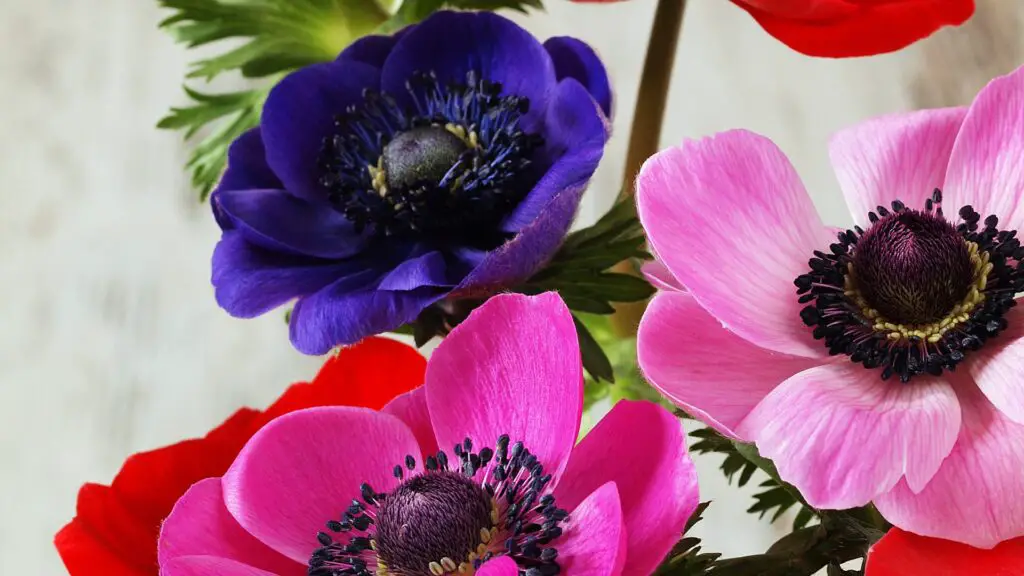
Anemones resemble roses in appearance, yet they have their own distinct personality. Double anemones have the unique ability to resemble semi-double roses while yet retaining the dog rose appearance.
The core, though, has that intense purple blue tint that distinguishes them. As a result, they resemble a “artist’s representation of an extraordinary rose that retains its natural appearance.” Because they are little, they cannot replace rose bushes. They are, on the other hand, quite easy to cultivate and produce an abundance of blossoms. They come in a wide spectrum of colours, from white to violet, via red and purple, but they also come in blue. And there are no blue flowers. They’re perfect for flower beds and borders in any casual setting, and they’re a must-have in cottage gardens!
- They are typically hardy in USDA zones 7 through 10.
- The sun is shining brightly.
- Season of blooming: spring.
- Size: around 1 foot tall and wide (30 cm).
- Well-drained mud or grimy soil with a pH of 5.6 to 7.5 is required.
Lisianthus

It is a rose-like flower with large petals and a rounded cup shape.
Lisianthus also comes in a variety of hues. They come in pastel colours as well as deeper hues like blue and purple. There are also Lisianthus with a watercolour appearance, with white petals and colourful tips.
The Lisianthus bloom isn’t as full as a rose’s, but it’s a sophisticated flower with a lot to offer gardeners looking for rose-like plants.
The roses of the desert
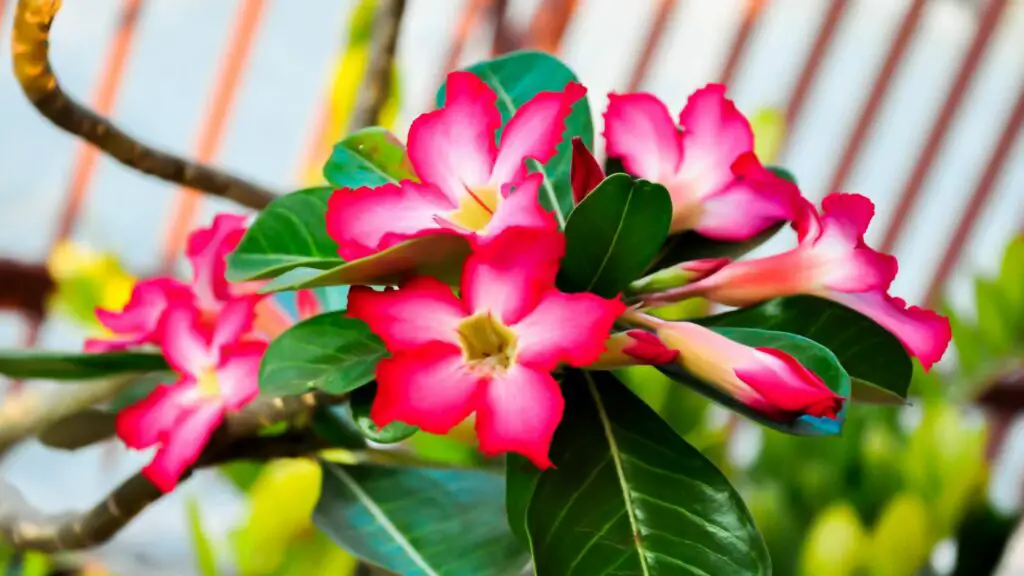
The desert rose, Adenium obesum, blooms in southern Africa, Arabia, and the eastern subtropical zones. The plant can be found in the Sahara Desert on occasion. This is most likely why the plant is known as the desert rose.
Even if desert roses are not as plump as roses, a bouquet of these flowers may calm the mind and soothe the eyes. At first glance, its pinkish flurry petal edges with white in the centre may entice everyone.
A desert rose plant in your room will offer some colour to the environment if you are a flowery person who has a weakness for roses. Desert rose is a beautiful flower that is said to bring good luck to those who wear it.
Hydrangea

Hydrangea macrophylla, sometimes known as hydrangea, is a flowering plant native to Asia and North America. It seems to be a multicoloured ball with a flurry texture due to the many flower leaves.
The sight of a flowering hydrangea shrub delights you more than anything else. A garland with contrasting colours may readily raise the spirits.
Rhododendrons or Azaleas

Azaleas or Rhododendrons are evergreen blooming shrubs that belong to the genus Rhododendron, which means “rose tree” in Ancient Greek. Rhododendron ferrugineum is commonly known as the alpine rose. They are cultivated in zones 3 to 9 and are native to North America, Asia, and Eastern Europe. They have a lengthy flowering season, similar to roses, blooing from spring to summer. Pink, white, red, yellow, and violet trumpet-like flowers are produced in groups. Depending on how you train and trim your azaleas, they can grow anywhere from 1 to 25 feet tall. They thrive in dappled shade, acidic soil (pH of approximately 5), and rich, well-draining soil. They require plenty of water when in bloom and thrive from a thick layer of mulch.
Buttercups
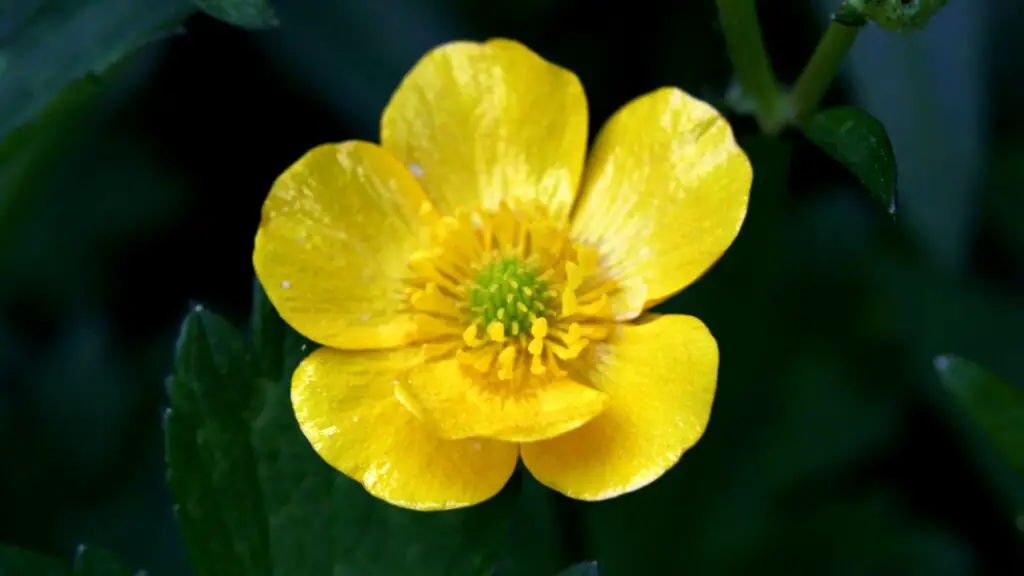
are a genus of herbaceous perennials with stunning rose-like blooms. They may be found in North America, Europe, Asia, and western Africa. They thrive in wet, partly shady locations as forest flowers. Small yellow flowers with a single layer of petals grow in the wild. Cultivated hybrids, such as peonies and roses, are cultivated to generate large, beautiful blooms with several layers of blossoms. The blossoms resemble coiled ribbons before they unfold. Buttercups are sometimes referred to as “ribbon roses” because of this. Reds, pinks, whites, and yellows are available.
Buttercups are widely grown for their cut blooms. Bulbs are planted in the spring and bloom in the late spring and early summer. Ranunculus may be cultivated in zones 4 through 11, however they are not cold hardy and should be brought indoors during the winter in colder locations. They like full sun to moderate shade and well-draining soil.
Lizzy busy
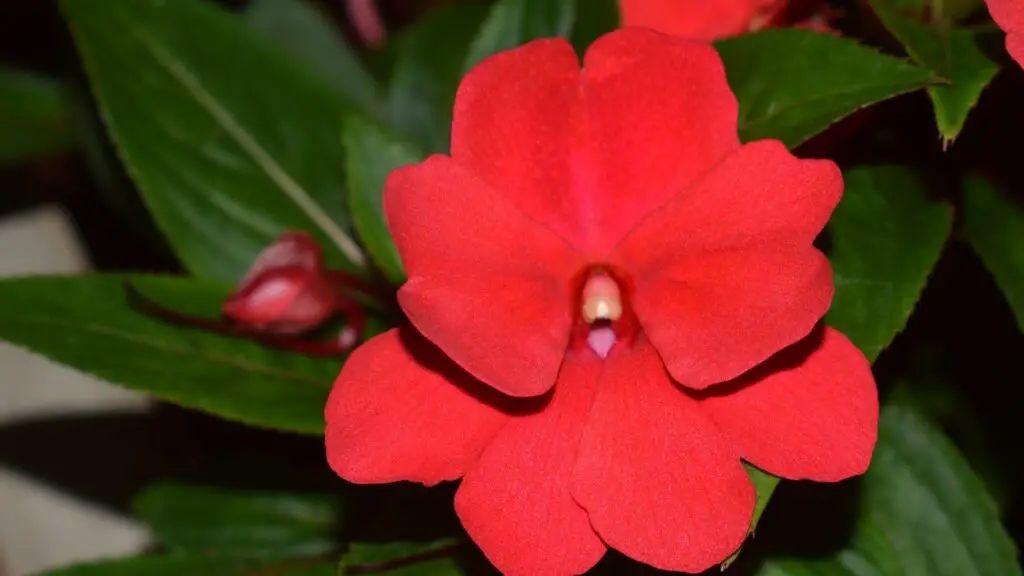
Impatiens walleriana, sometimes known as Busy Lizzy or double flowered impatiens, is an East African native. Late spring, summer, and fall, these herbaceous blooming annuals add a splash of colour to the garden. It is one of the flowers that look like roses. They can be cultivated in zones 2 to 11, and they are winter hardy in zones 10 and 11.
They like shaded locations with healthy, wet soil that drains well. Impatiens with double blossoms mimic rose flowers. They come in red, pink, purple, and orange hues. They may reach a height of 2 feet.
Zinnia double
It is one of the flowers that look like roses.Zinnia marylandica is a South American native. Zinnias have long been popular as garden flowers, with red blooms on double blooming kinds. They are annuals, unlike roses, and may be produced from seed.
They can withstand poor soil conditions and thrive in zones 2 to 11. Both good drainage soil and a small amount of water are required. Clusters of green leaves around 20 inches tall quickly develop and produce enormous pink flowers all summer and fall.
Chrysanthemum

Chrysanthemum indicum is a popular flowering plant with over 20,000 variations! The blooms of “single” type chrysanthemums are rose-like and make wonderful cut flowers. In the fall, many-petaled pink, white, red, and yellow flowers blossom. They may be cultivated as annuals as well.
Chrysanthemums are cultivated globally in zones 5 to 9 and are native to East Asia and northeastern Europe. These herbaceous perennials form little bushes that develop to be around 3 feet tall and broad. They like sunny locations and may thrive in a variety of soil conditions.
Sharon’s Roses
Although Hibiscus syriacus’ huge, funnel-shaped blooms are not similar to roses, these large blooming bushes make a structural statement in the landscape, just like roses. They produce masses of pink, red, white, and yellow blooms with a stunning pink centre in the summer. It is one of the flowers that look like roses.
Hibiscus prefers full sun or some shade to thrive. It can survive in low soil and dryness, but flourishes in rich soil with plenty of heat and humidity. They are grown in zones 5 to 8 and are native to China, India, and other regions of East Asia.
Poppy Oriental Flowers
It is one of the flowers that look like roses. The herbaceous perennial Papaver orientale is endemic to Eastern Europe and Asia. Poppies have been grown for more than 3000 years! Their huge, dramatic blossoms resemble roses and look stunning when clipped together.
They thrive best when seeds are sown directly into the ground at the desired place. It is forbidden to transfer seeds. Select a sunny location with sufficient drainage. They produce masses of vibrant orange, red, pink, purple, and white blooms from late spring to mid-summer.
Oriental poppies fall back after flowering and go dormant during the summer heat. In the fall, they begin to gently develop anew, eventually producing a cluster of leaves during the winter. Their development accelerates in the spring, and they produce flower spikes.
Bush Weigela Flowers
Weigela is an East Asian blooming deciduous shrub. Zones 4 through 8 are suitable for these ornamental plants. They reach a height of 6 to 10 feet and like full sun to moderate shade. Weigela Bush prefers rich, composted soil that is wet and drains well. It is one of the flowers that look like roses.
Weigela florida produces multitudes of little pink or yellow flowers from spring until summer. These large bushes, like roses, make a statement while being low-maintenance and easy to care for. They bring a lot of pollinators into the garden.
Quince in bloom
It is one of the flowers that look like roses. The blooming quince, Chaenomeles japonica, is a deciduous shrub endemic to Southeast Asia. They are Rosaceae, and their pink, red, and white blossoms are quite similar to wild roses. Just like roses, they have thorns and make little fruits.
They are attractive decorative shrubs in gardens that may reach a height and breadth of 10 feet. They create excellent hedges and barriers. Plant them in full sun with adequate drainage in a loamy, somewhat acidic soil. Flowering quinces, like roses, are low-maintenance plants.
Pear Ornamental Flowers

The decorative pear tree, Pyrus calleryana, is a non-fruiting deciduous tree that produces masses of white rose-like blossoms in the winter and spring. They are linked to roses since they belong to the Rosaceae family. It is one of the flowers that look like roses.
Zones 4 to 8 are ideal for ornamental pears. They flourish in wet, well-draining soil but may grow in a range of soil types. They can endure dry, scorching circumstances. The leaves change colour from green to purple, scarlet, and golden throughout the fall. They may grow to be 20 to 40 feet tall, depending on the variety.
Conclusion:
Many of us adore roses but lack the time or skill necessary to grow them. The flowers in the yard were stunning. She would gather rose petals at the conclusion of each blooming season and use them to construct various crafts.
Although not everyone has the time to care for their roses, you can still acquire blooms that look like roses and some that are also fragrant by growing these rose bush alternatives.

Hi This is Maria, We are a team of gardening enthusiasts with a passion for gardening. We have tried to bring you tips and advice enabling you to grow and maintain a healthy and beautiful garden. We Hope You Find it Useful.

